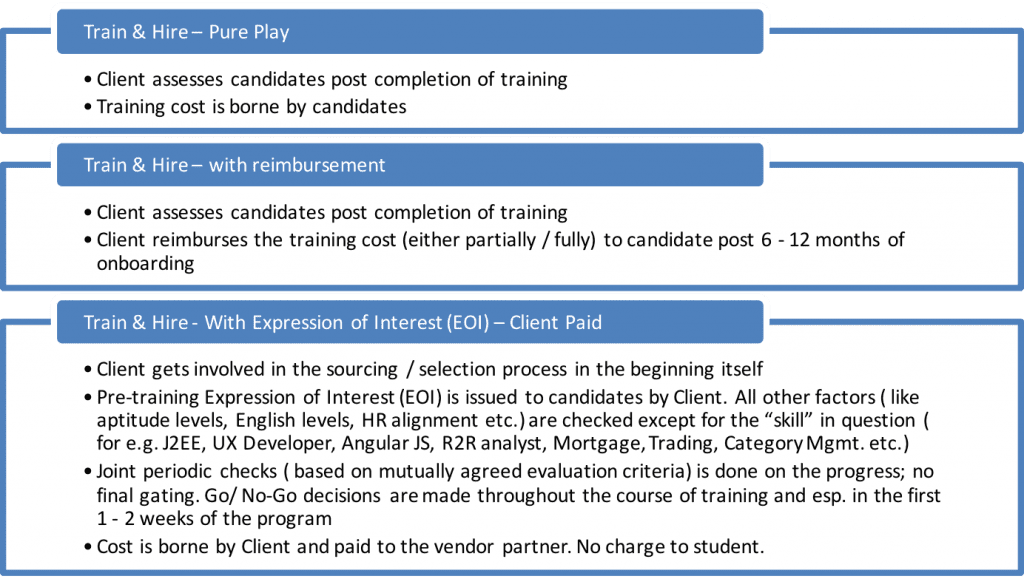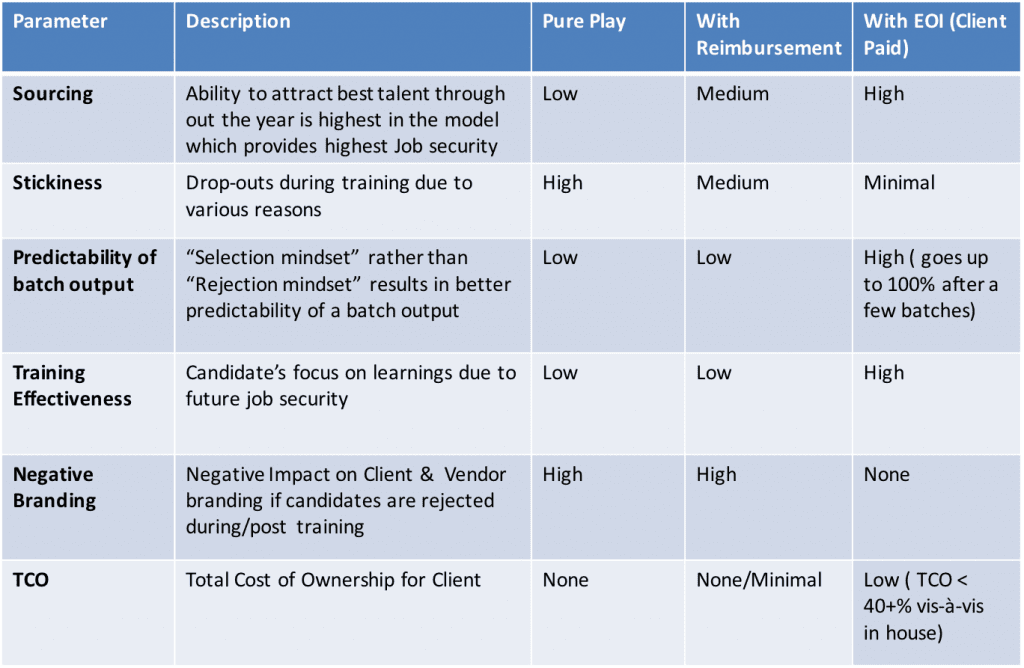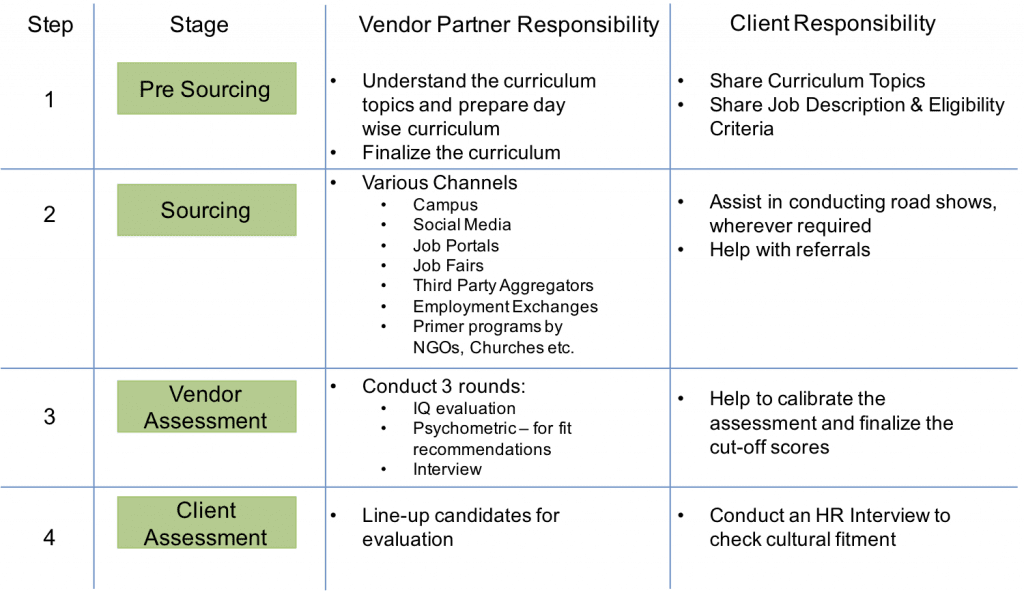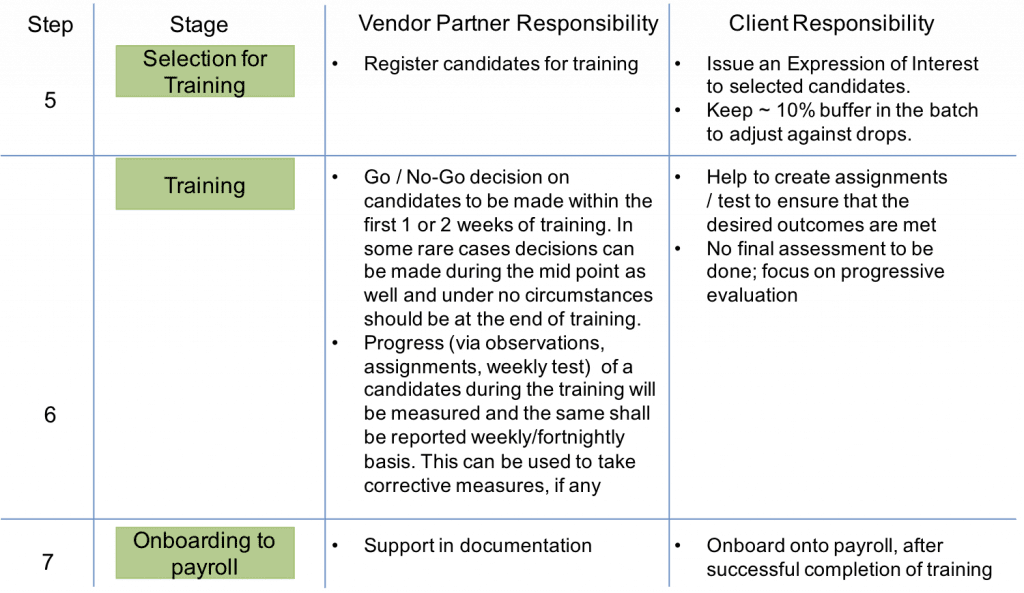That’s the good news! However, the bad news is that most don’t understand it well enough to ensure that the model delivers outputs at scale with consistency, repeatability and predictability!
Why is this good news? If executed the right way, it addresses the needs of all stakeholders and results in a win win for all:
For Corporates/Employers

For Trainees
- Pygmalion Effect in the works – it’s for theirs to lose!
- Since there is a job at the end of the tunnel, they focus on learning and acquiring skills rather than searching for jobs on a daily basis via off campus and other routes. Holistic and all round development
- Results in a good start!
For Training Partners
- Doing “Good” and making money; proving to the world that though contradictory, the elusive balance can be achieved
- Scalable and Sustainable model!
Seems to be a great model, right? Then what’s bad? What’s difficult to understand? Why is the model not understood well?
A little bit of History always helps to put things in perspective! The need for “trained freshers in large numbers” was required for the first time in the 1990s by the burgeoning IT industry. Fulfilment was a challenge as the supply of these skills from our academia was limited, probably as there was no demand for such large numbers till date ( chicken and egg situation!). Large IT services companies solved this situation by running training programs in house, post hiring the freshers. They made significant investments in this area as there was no other option. With the pressure to put these resources to production as soon as possible, these companies focused on the bare minimum and what was required for the jobs of that era ( more commodity work – onions & potatoes work rather than full meals and fine dining!). The growth was so rapid that no one had the time to look ahead and ensure that these academies ( also, called Universities by quite a handful!) stayed abreast with the aspirations & demands of the future.
Proliferation of in house training ( and of course, hiring untrained freshers) created jobs in the training & hiring space within these IT companies; including hands and feet required to run the infrastructure of these large training centres. The focus was mostly inwards – dealing with internal stakeholders and not much focus/interactions with the external world – the world of customers/markets/competition. This was not core to the business of these companies ( was on the cost side of the profit equation). The natural outcomes was inertia setting in resulting in a lack of “future orientation” and an the creation of an insular mindset. External developments, innovative approaches somehow did not make headway with the bulwarks of the hiring & training departments within these organisations.
As technology’s ability to disrupt businesses became mainstream in the last decade or so, the players in the IT/ITeS industry embraced the “talk” but not “walking the talk”! The space was abuzz with technology’s ability to transform business and the fact that IT companies should try and get a big chunk of this pie from their customer’s wallet. Some of them did (remember, we were good with the “talk”) get a significant chunk – however, most failed to execute as the talent supply chain was still geared to deliver yesterday’s business and with freshers contributing to 50% – 70% of their workforce and worse still, their enablement process still rooted in the 1990s era, disaster was looming large.
While I have taken the example of the IT/ITeS industry; other sectors in the services space are dealing with similar issues, though to a lesser degree.
Attempts were and are still being made by Skilling firms to disrupt the space and ensure current demands are met while staying tuned with future developments. It is easy to understand that this is “core” to these firms. Significant progress has been made by some of them – however, this is still not mainstream!
There are many versions of the HTD model in the market. The play is mostly on “H” and “D” and the slants are done based on who is designing them – typically, with the intent of win – lose! Here is a look at some of the models in the HTD space at play:

And, the models compared on some key dimensions:

So, wouldn’t you agree that it’s a no brainer that as to which option should be chosen? I am sure, it can’t be that difficult…
Now, that we have an idea of the model that can help deliver quality at scale, here is a quick look at the steps to make this successful – who should be doing what and more importantly, what is it that should not be done!


This has already become a long article. I will stop here as I have done my share of talking on the happening yet elusive HTD model with a request for others to join the conversation and make this a movement that will deliver the greatest good for the greatest numbers…





